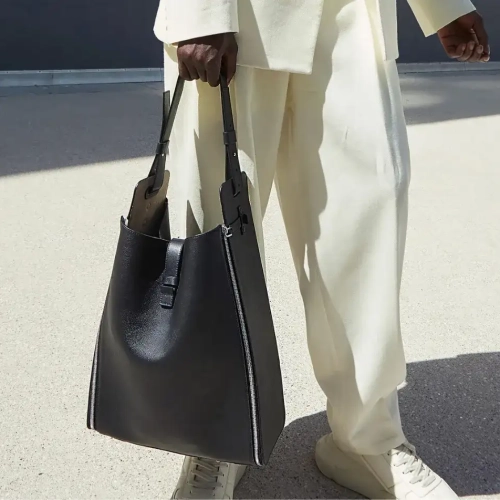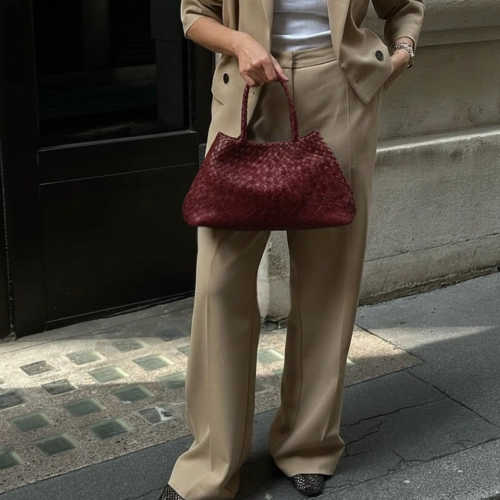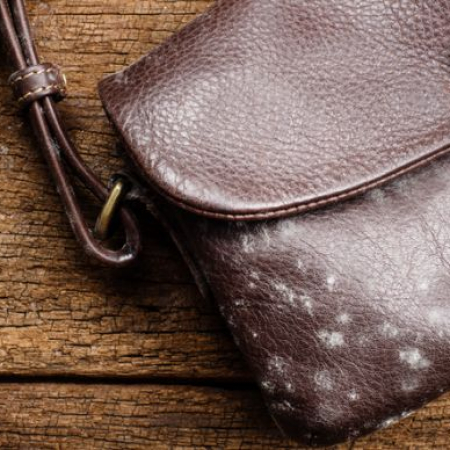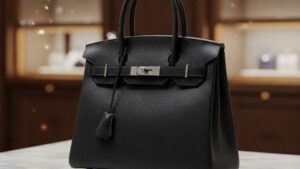No products in the cart.
Return To Shop
0
$0.00
0
No products in the cart.
Return To Shop
Shopping cart (0)
Subtotal: $0.00
Free shipping over 49$
0
$0.00
0
No products in the cart.
Return To Shop
Shopping cart (0)
Subtotal: $0.00
Free shipping over 49$
FREE SHIPPING+30 DAY RETURNS
Order Now - 3 Buyers Get 100% Order Value Back Daily
0
$0.00
0
No products in the cart.
Return To Shop
Shopping cart (0)
Subtotal: $0.00
Free shipping over 49$
How To Clean Mold Off Leather: Simple & Effective Tips
Cleaning mold from leather can be essential for maintaining your leather goods, whether they are leather shoes, leather clothes, or furniture. To effectively remove mold, mix equal parts of rubbing alcohol and vinegar in a spray bottle. This solution will help eliminate mold growth while preventing further damage. Start by using a soft cloth or sponge to gently wipe the affected surface of the leather. Be sure to rub lightly to avoid any potential discoloration or stain on your leather product. After cleaning, dry the leather completely and apply a leather conditioner to restore its natural oils and ensure longevity.
To prevent mold from returning, it is crucial to store your leather item in a cool, dry place, away from moisture. Regularly expose your leather to sunlight to inhibit spore growth. If you notice any signs of mildew or mold on leather, act quickly to get rid of mold before it spreads. Keeping your leather surface clean and dry will help maintain its integrity and appearance for years to come.
Pre-Step: Is It Definitely Mold?
Before determining whether the substance on your leather boot is mold, it is imperative to consider the characteristics of various types of mold. Mold typically appears as a fuzzy or discolored patch and thrives in damp conditions. To confirm its presence, utilize a clean cloth or cotton swab dipped in a mild detergent or a mixture of bleach and water in equal amounts. Gently brush away any visible growth with a soft brush and observe if further discoloration occurs. Should the substance persist, it may indeed be mold.
To effectively address mold on leather, it is essential to dry your leather thoroughly. Use a clean container to hold a clean cloth soaked in warm water and mild detergent. After cleaning, ensure the leather is completely dry by allowing it to air-dry in a shaded area, avoiding direct sunlight which can cause the material to decay. For stubborn mold, utilize a sponge to wipe the affected area and then hang the boot on a sturdy hanger to facilitate the drying process.
Afterward, store your leather in a cool, dry place, ideally utilizing cardboard for support to prevent crevices where fungus may thrive. Regularly inspect your leather for signs of mold, as even minimal exposure can lead to the proliferation of spores that can wreak havoc on the material. Following these instructions will help maintain the integrity of your leather and prevent further issues related to mold.
Cleaning Supplies Required
To maintain a hygienic environment, it is imperative to utilize the appropriate cleaning supplies that effectively combat the accumulation of organic material and prevent spores from spreading. Essential items include various types of soap, which serve to eliminate dirt and bacteria from surfaces. It is advisable to mix the soap with water in a suitable container to create an effective cleaning solution.
When addressing the cleanliness of walls and floors, one must consider the necessity of employing cloths made from durable fabric that can withstand the rigors of scrubbing. Additionally, utilizing tissue paper can assist in the removal of residual grime. After cleaning, allowing items to air dry ensures that moisture does not contribute to mold growth.
To optimize storage of cleaning supplies, it is advisable to keep them in a designated area that is both cool and dry, away from direct heat. This practice not only extends the lifespan of the products but also enhances their effectiveness.
How to Get Rid of Mold on Leather
Eliminating mold from leather can be a delicate process that requires careful attention to detail. First, it is imperative to assess the affected item and ensure that it is stored in a dry environment, as moisture fosters mold growth. Begin by preparing a cleaning solution; in a separate container, mix equal parts of water and isopropyl alcohol. This solution serves as a great way to combat mold spores while remaining gentle on leather. Using a soft cloth, gently dab the mixture onto the impacted areas, taking care to avoid excessive saturation.
Once the mold is removed, it is essential to allow the leather to dry thoroughly inside, as residual moisture can lead to further mold proliferation. To maintain the integrity of the leather, consider applying a leather conditioner after cleaning, which can help preserve its suppleness. For those experiencing persistent mold issues, consulting FAQs related to leather care can provide useful insights and additional techniques. By following these steps diligently, one can successfully restore the leather item while mitigating the risk of future mold growth. Regular monitoring and maintenance are advisable to ensure the longevity of the leather goods.
Preventing Mold from Growing in the Future
Preventing mold from growing in the future necessitates a comprehensive approach that prioritizes moisture control and environmental management. One effective strategy involves the careful selection of materials and the use of appropriate containers to store items susceptible to mold growth. For instance, utilizing airtight containers can significantly reduce humidity levels, thereby inhibiting the proliferation of mold spores.
Furthermore, it is essential to regularly mix cleaning solutions that contain antifungal properties to treat surfaces prone to dampness. By employing these solutions during routine maintenance, one can create an inhospitable environment for mold development.
It is also imperative to tend to areas that are often overlooked, such as basement corners and attic spaces, which can harbor excess moisture. Ensuring proper ventilation in these regions will aid in the dispersal of humidity.
In conclusion, a proactive stance involving the use of suitable containers, the strategic mix of cleaning agents, and diligent tending to moisture-prone areas can significantly mitigate the risk of future mold growth, thus fostering a healthier living environment.
Conclusion: How To Clean Mold Off Leather
How to Clean Mold Off Leather effectively removing mold from leather requires careful attention and the right materials. First, it is essential to prepare a cleaning solution by utilizing a suitable container and mixing equal parts of water and white vinegar. This solution serves not only as a mold remover but also as a disinfectant, ensuring that any remaining spores are eradicated.
Once the mix is ready, it is important to apply it gently to the affected areas of the leather using a soft cloth. Care must be taken to avoid saturating the leather, as excessive moisture can lead to further damage. After cleaning, the leather should be thoroughly dried in a well-ventilated area.
Finally, conditioning the leather with a specialized leather conditioner will help restore its suppleness and prevent future mold growth, ensuring the longevity and aesthetic appeal of the material.
john
I’m John, co-founder of Levant Leather and a passionate expert in premium leather. With nearly a decade in the luxury leather industry, I’ve gained deep experience as both a designer and manufacturer through my work at Levant Leather
Author Posts 








